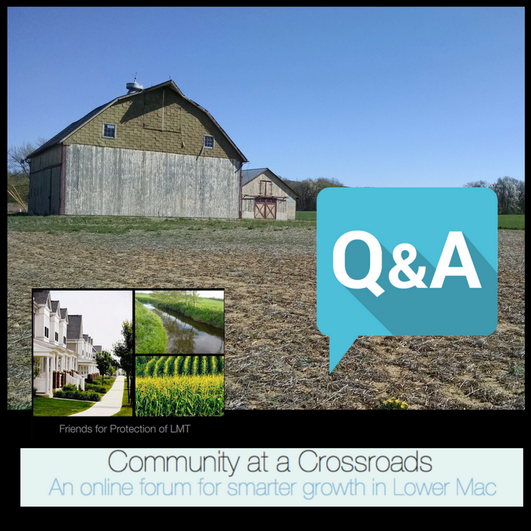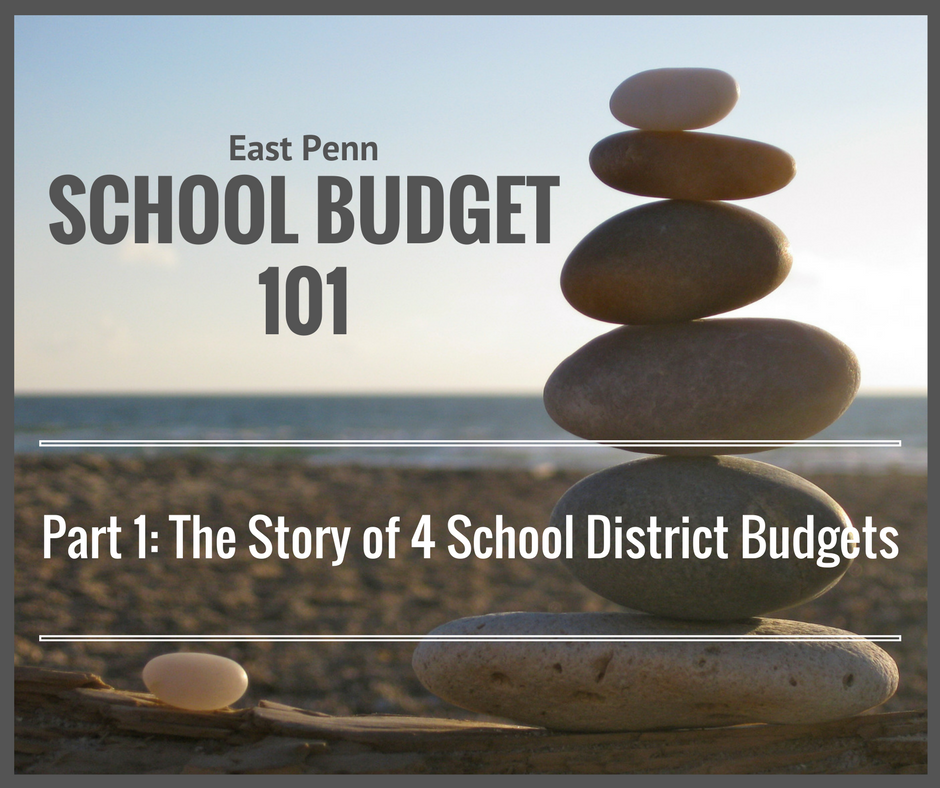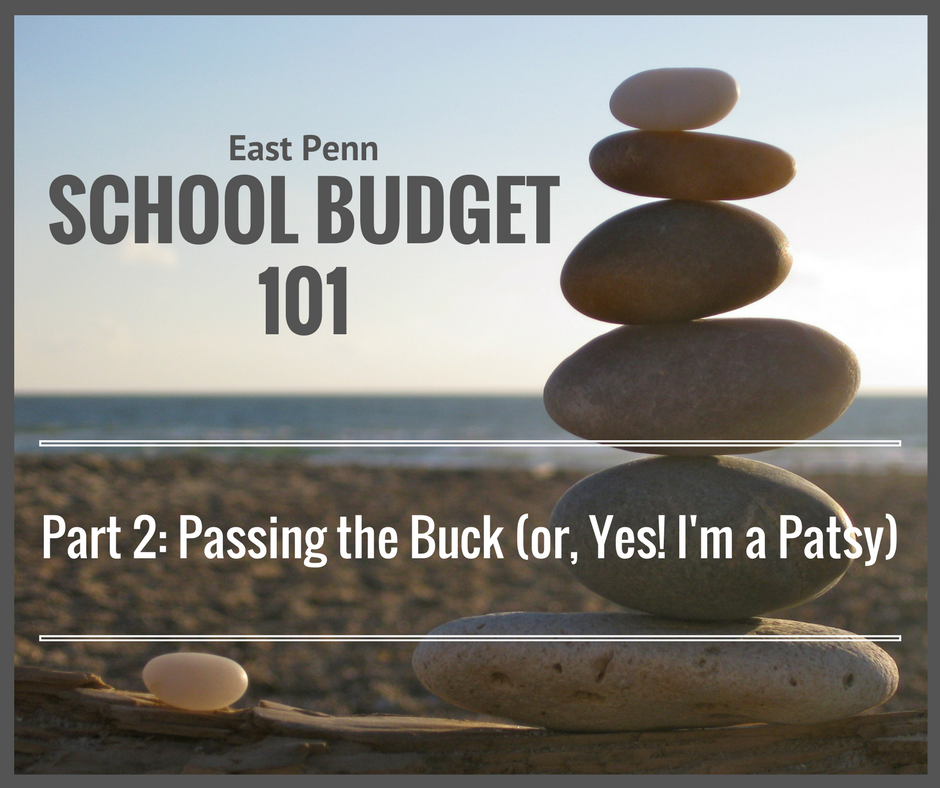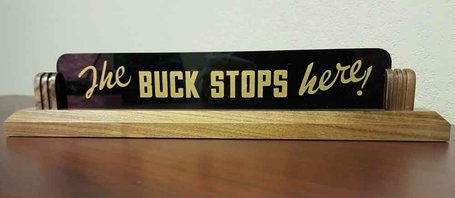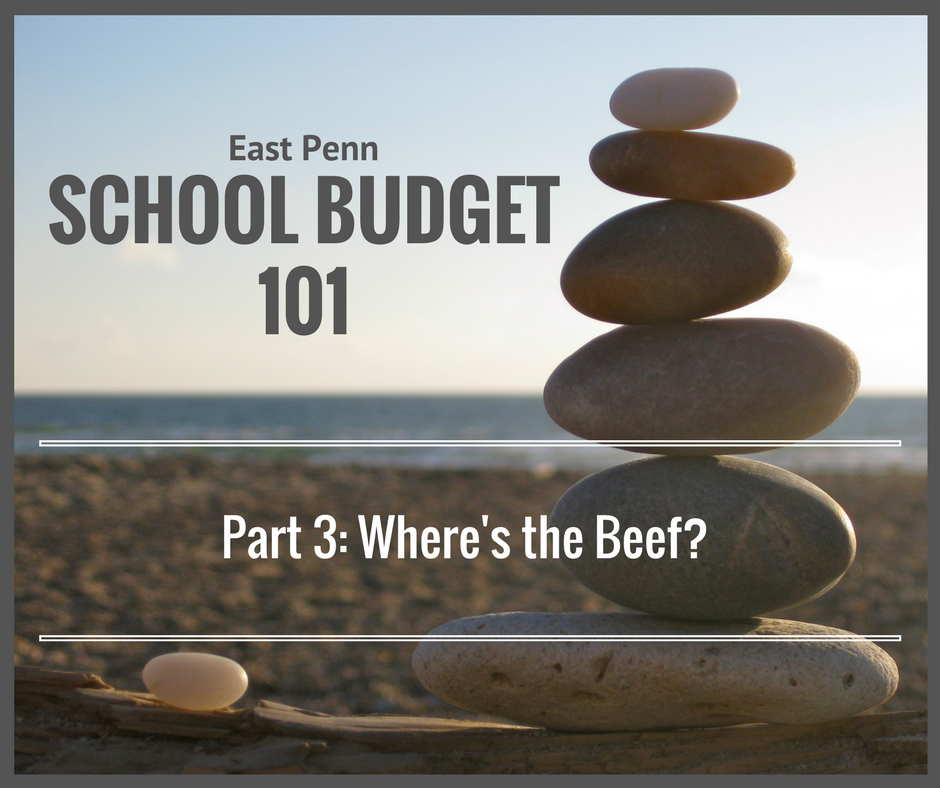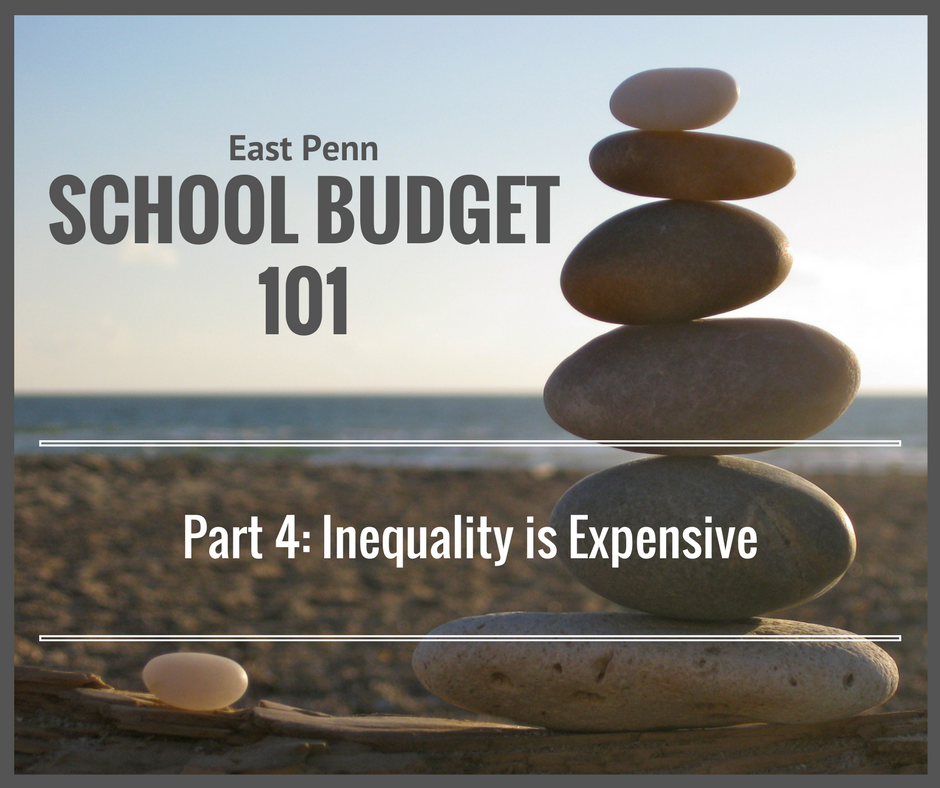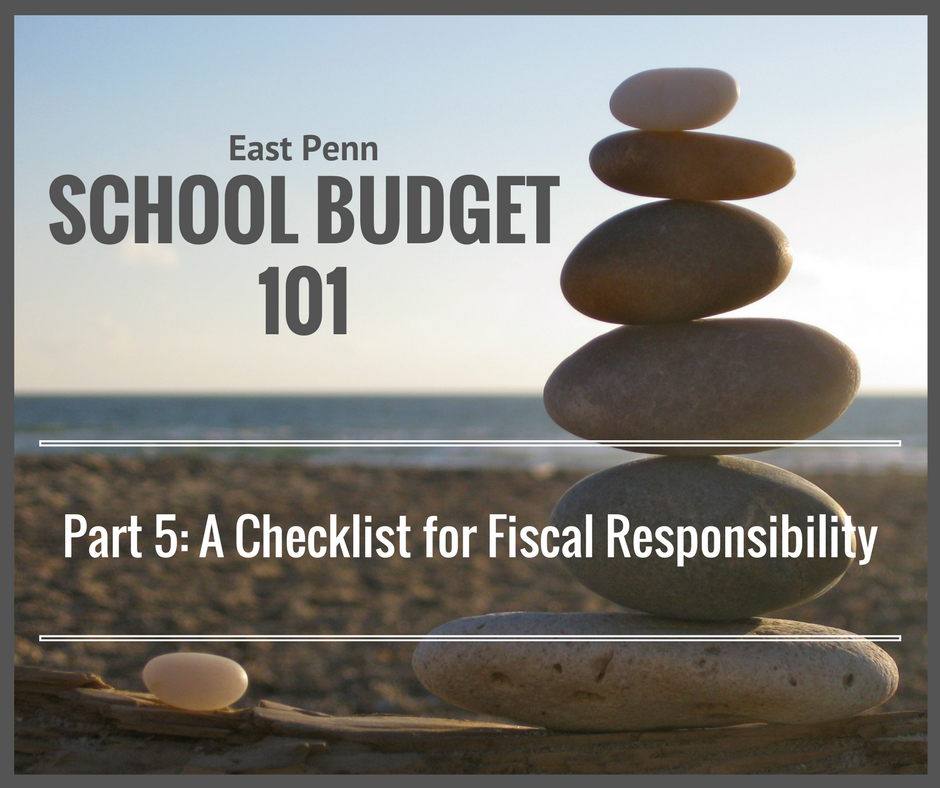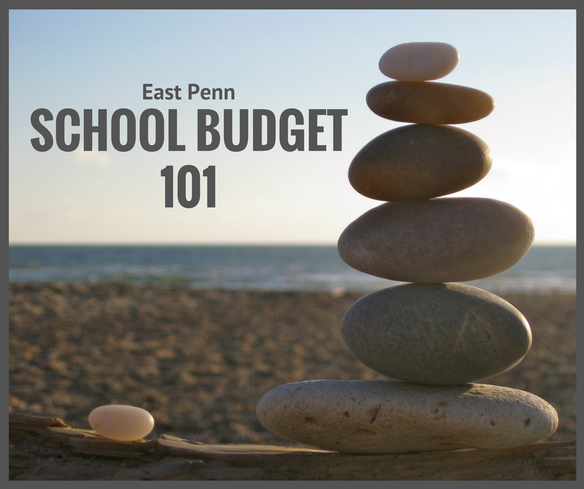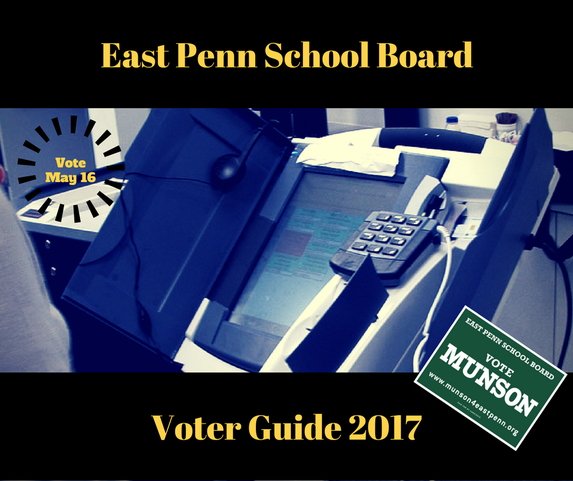|
The results of yesterday's school board primary are in, and I'm happy to report that I received enough votes to be on the ballot in November on both the Democratic and Republican tickets! Many thanks to everyone who worked hard to make this happen, from distributing signs to making donations, to hosting meet-the-candidate events to giving advice, from sharing social media posts to telling friends and neighbors about me. I have greatly appreciated all the support, and it reminds me why I signed up to take this on in the first place.
Congratulations too to all the candidates who were willing to put their names out there for this important service to the community. Adam Smith, Alisa Bowman, Alan Earnshaw, and Ellen Lewis will join me on the ballot in November. And I hope we see Wally Vinovskis and Sherrine Eid continue to offer their expertise, leadership and enthusiasm to the residents of our district. Most of all, thanks to all the community members who voted yesterday. Elections-- particularly local primaries like this one-- have important consequences for all of our lives. -Ziad PS: For those interested in the details, I ended up with the third most votes in the Democratic primary (behind Alisa Bowman and Ellen Lewis) and the fourth most votes in the Republican primary (behind Adam Smith, Alan Earnshaw, and Alisa Bowman). You can see the specific vote totals here.
1 Comment
Friends for the Protection of Lower Macungie Township, an active group that promotes smart growth in the community, recently sent a number of questions to those running for the East Penn School Board for the first time. Though I am an incumbent, they asked great questions and so I thought I would answer them too: QUESTION: By a narrow 5-4 vote East Penn supported the Hamilton Crossings TIF. If a similar issue were to come up again what would your position be? I voted against the Hamilton Crossings TIF within the first few months of becoming a board member. The TIF takes half of the tax revenue generated by the Hamilton Crossings retail center and diverts it away from the schools in order to pay debts incurred in developing the property. I voted no because I believed that the developers would build Hamilton Crossings even without the support of the taxpayer money generated by the TIF. Hamilton Crossings now generates more than $600,000 annually in tax dollars to the school district, which is great. But I wish we could benefit from the more than $1.2 million that the district would receive annually without the TIF in place. QUESTION: Last year, the School District ignored a formal letter from the Lower Macungie Twp. Planning Commission opposing the sale of the Lower Macungie Elementary School Property. Multiple Lower Macungie Commissioners have gone on record expressing their disappointment (Beitler, Higgins). They both claimed that if given the chance, Lower Macungie Twp. would have considered making an offer on the property to preserve it. Apparently there was a lack of communication between the township and school district administration prior to an agreement of sale. If elected how would you ensure this lack of communication is addressed moving forward? The way this sale was handled is my single biggest regret from my four years on the school board. The district got a good deal on the property and selling it was the right thing to do (see Questions about Property Sale for details). But I was unaware at the time that the township was interested in preserving the land and might be willing to purchase it themselves. I wish we could have explored that option. The township concerns about the sale were raised only after the district had entered into a formal purchase agreement with the buyer. I agree that there needs to be better communication between township and the school district administration, and that such communication might have led to a different outcome with the Lower Macungie Elementary School property. I now regularly ask more questions of the administration about coordination and communication with the townships and boroughs that make up the district. As a board member, I now pay greater attention to the details of township and borough business than I did in the past. Moving forward, I think two specific changes to the way of doing business would help. First, I would like to see greater transparency in school board meetings by making them available through internet streaming or local cable television. This would allow everyone in the community, including municipal officials, to be better aware of school district issues. Second, I would like to see school administration and municipal officials establish a regular schedule of meetings to discuss issues of mutual concern. Such meetings need not be lengthy nor lead to any specific cooperation. But it would increase the flow of information between these community leaders and avoid missed opportunities like this one. QUESTION: The School District owns property off of Rt. 100. We have expressed concerns that with the proliferation of warehouses and freight traffic along Rt. 100 that this is no longer a safe or desirable location for a future school campus. Would you consider exploring other safer and more community oriented (and walkable) sites for future school construction if opportunities were to arise? Would you proactively work with municipal officials on school siting issues if additional facilities are ever needed? My answer to this question is simple: YES! I am 100% in favor of exploring better possible sites for any future school construction that might be needed in the future. And I would happily and enthusiastically work proactively with any interested parties to do so. Many thanks to those at "Friends LMT" for their great questions, as well as for their continued efforts to keep the community informed and involved in local affairs.
One of the chief sources of misunderstanding about the budget comes from the large number of budget votes the school board must take each year. The school board is required by law to adopt not one budget, but four every year: a ‘proposed preliminary budget,’ a ‘preliminary budget,’ a ‘proposed final budget,’ and a ‘final budget.’ The last of these -- the final budget -- is scheduled to be adopted in June (you can see the full budget schedule for yourself here).
An important twist to this schedule is that the state legislature and governor don’t reveal to school districts how much aid they will be receiving until after all four of these votes have taken place. Last year, the state did not pass its own budget, including the education budget, until March of the following year-- a full nine months after the district was required to adopt its own final budget. But even if state lawmakers meet their own legal obligation to pass a state budget by June 30th each year, East Penn must adopt still adopt all four of its budgets without knowing how much revenue it will receive from the state. To make matters worse, Pennsylvania is one of the only states in the country that does not distribute state aid to school districts according to a predictable formula. Instead, state support for education is at the mercy of the changing whims of our representatives in Harrisburg, subject to annual renegotiation and partisan maneuvering. The result is that local school districts like East Penn have no way of predicting with any accuracy or certainty how much state revenue they will receive. So there is lots of chatter about school budgeting over many months each year. But each of the four annual budgets-- proposed preliminary, preliminary, proposed final, and final-- can change significantly as the state budget becomes more clear, as new local information comes in, and as further discussion and negotiation takes place between district administrators and the school board. In past years, I have voted in favor of some budgets and against others. And the figures in each year’s first three budgets always change by the time the final budget is adopted four months later. This year, the preliminary budget included a tax increase of 3.77%, which was reduced to 2.9% in the proposed final budget (passed on Monday, May 8). It is my sincere hope that we can keep this reduction -- or reduce taxes even further -- in the final budget in June. This budget timeline is only one piece of the larger budgetary puzzle in our district. To read the other pieces in this budget series, check out: You’ve heard the saying “the buck stops here,” right? President Truman famously kept a sign with the phrase on his desk. He recognized the common sense idea that leaders should take responsibility for the consequences of their decisions. But as we all well know, most politicians don’t like this idea very much. Our representatives in Harrisburg and Washington are quicker than ever to duck responsibility for how their votes affect regular people. And nowhere is this more obvious than in the funding of public schools in Pennsylvania. The first and most important fact about our district’s budget is that many of our expenses are decided in Harrisburg, not locally. State legislators pass mandates that legally require the district to spend money but do not provide the revenue to pay for them. These politicians (with salaries from $98,609 to $134,998) create new expenses for school districts every year, then pass the buck to local school board members (who are paid $0) to collect the taxes needed to pay the bills. Here are some of the biggest yokes our state representatives have put around the school district’s neck:
These are just three examples of ways in which our representatives in Harrisburg have passed the buck to you and I at the local level. There are literally hundreds of other mandates handed down by the state, from requiring a certain number of foreign languages being taught, to dictating the rules for bereavement leave of employees, to how disciplinary records must be transferred when a student transfers schools. Some mandates focus on big issues while others can only be described as extreme micromanagement. And they adopt more every year. After all, it's easy to decide what schools should and shouldn’t do when you don’t actually have to pay any of it. Let me be clear: I am not opposed to fair retirement benefits for teachers, robust special education funding, school choice, or the goals of numerous other mandates. We need all of these things. But those making the decision for how to implement them should also be the ones making the decision for how to pay for them. The state used to contribute its fair share. In the 1974, the state paid 55% of all public school costs. Next year, by contrast, East Penn is on track to receive only about 23% of its operating budget from the state. They’ve passed the buck to you and me. So as you review the school district’s four budgets each year, consider how much of the “local” budget is really under local control. And next time you have the opportunity to vote for a state representative, look at how many school mandates they favor and whether they have passed the buck to local school districts to pay for them. State and federal mandates are only one piece of the larger budgetary puzzle in our district. To read the other pieces in this budget series, check out:
The East Penn School District will spend approximately $138 million this academic year-- a lot of dough! One of my key concerns is whether the district is spending money in the most cost-effective ways, and in ways proven to make the biggest positive impact on students and our community. There are many aspects of the budget in which local control has been taken away (see Passing the Buck [INSERT LINK] for some examples). But for those things we still can decide for ourselves, I believe we need to make evidence-based decisions based on facts and rigorous research. Alas, one of the things I’ve learned in my four years on the school board is that this doesn’t always happen. People advocate for funding simply because we’ve always funded certain things. There are other times when funding proposals follow the latest educational fashion or new (untested) idea. Or there are some proposals that are politically popular, even if they don’t work very well. Let me give a few examples:
The core point is simple: facts should matter. People of a certain age will remember the famous Wendy’s ad featuring an elderly woman repeatedly asking, “Where’s the beef?” In discussions of the school district’s budget, I think we should all be asking for more “beef”: facts and evidence to support the effectiveness of funding priorities. Without the beef, we end up with a budget that is both too expensive and that leads to poorer outcomes for students, teachers, and taxpayers. The budget should not be about “how it’s always been,” what is currently fashionable in education, or what is politically popular. For $137 million, it should be about what works. Evidence-based decision making is just one piece of the larger budgetary puzzle in our district. To read the other pieces in this budget series, check out:
Most people understand that there is growing inequality in the United States. The wealthiest Americans today control a much larger share of the total wealth of the country than they did in past decades, while increasing numbers of people struggle to meet basic household expenses. This divide is widening in our own community too. The number of people living in poverty in Lehigh County has grown by more than 13% in just the last decade. A key measure of poverty in East Penn is the number of student eligible for free or subsidized lunches, based on how the income of their parents compares to the federal poverty line (currently $24,300 for a family of 4). As you can see from the graph below, the proportion of East Penn students registered for free or subsidized lunches has more than doubled in the last ten years, from 10.9% in 2006 to 25.8% in 2016.
Hundreds of research studies show how children from families in poverty enter school with fewer language and math skills than children from wealthier families. As just one example: kids from poorer families have been exposed to millions fewer words than kids from richer families when they enter school as kindergartners.
This inequality directly affects the bottom line of our school district budget. The number of teachers, teacher’s aides, special education programs, counseling, and other services necessary to educate all kids in the district can be traced directly to increasing needs brought on by growing community inequality. Inequality quite literally costs local taxpayers money. The exact price tag is impossible to pin down precisely. But we do have good estimates of how much school inequality costs Pennsylvania residents in general. A recent study by Temple University and the RAND Corporation shows that eliminating the achievement gap between poorer and wealthier students in the state would increase the state’s overall economic output by as much as $3.1 billion in the first year, and $43.5 billion over the next decade (just as a point of comparison, the deficit in the budget passed last year by Pennsylvania lawmakers is just over $1 billion). People are often puzzled why the costs of public education continue to rise. An important piece of that puzzle is the impact of growing inequality on school resources and school needs. We live in a community that is much more unequal than when you and I went to school. And we all pay for it. Inequality and poverty are only one piece of the larger budgetary puzzle in our district. To read the other pieces in this budget series, check out: What decisions allow us to be the best possible stewards of public resources? To me, the answer to this question is the essence of fiscal responsibility on the East Penn School board. Over the last four years, I’ve learned to consider the following questions:
Nothing in our school district raises more passions, or is shrouded in more confusion, than the annual budget. To help, I’ve put together a five-part series designed to give people a glimpse of the key issues in developing the school district budget each year. My goals are to (1) dispel some of the most common misconceptions about the budget, and (2) explain my own approach to the budget as a school board member. Understanding the budget doesn’t mean that everyone will always agree on the best course of action each year. But at least everyone can understand the main constraints-- and opportunities-- our community faces when it comes to ensuring a quality public education.
Here are the five posts in this series:
After reading this series of articles, please share your own thoughts, concerns, and observations about the East Penn budget process. I welcome your input! PS: You can also check out other posts I've written concerning the budget that aren't part of this series by clicking here. Would you please volunteer at the polls next Tuesday? The political parties will have lots of people handing out information about their school board candidates. I have to find my own volunteers!
Please consider donating some time to help our public schools. You can sign up for just an hour, or throughout the whole day. You can do so near your own home, where you'll be able to see your friends and neighbors. And you can help hand out information for multiple candidates too, if you want. This is an important part of the election, because many voters go to the polls without knowing who to vote for in the school board races. You don't need to convince, argue, or debate anyone-- just a friendly face and a handout with a little information (provided by me) is enough for many people. Good school boards lead to good schools. The good news is that all seven candidates for the East Penn board this year support strong public education in our community. Want more information to help you decide who to vote for? You can read what the candidates have made available at the links below. You will be able to vote for four:
The League of Women Voters of the Lehigh Valley has published a voting guide that includes very short statements by all the candidates (available here). So have both the Morning Call (available here) and the East Penn Press (available here). Most importantly, don't forget to vote for the candidates of your choice next Tuesday, May 16th. Polls are open from 7am to 8pm (if you aren't sure where to vote, you can check here). |
Details
Categories
All
Archives
December 2017
|

